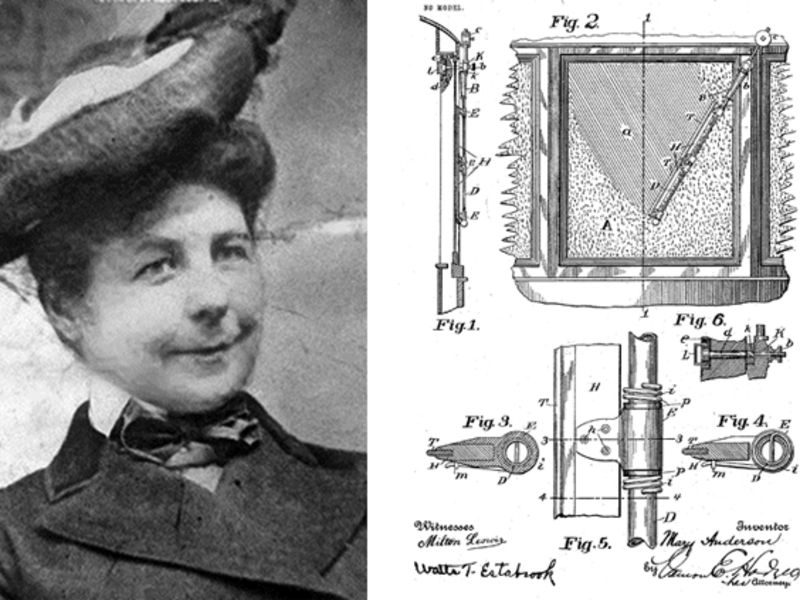
Mary Anderson of Birmingham, Ala., is granted Patent No. 743,801 on Nov 10, 1903, by the U.S. patent office for a “window cleaning device for electric cars and other vehicles to remove snow, ice or sleet from the window.”
Her device — operated via a lever from inside a vehicle — was similar to the windshield wiper found on many early cars. Anderson tried to sell the patented device to a Canadian manufacturer, but the company refused. The device had no practical value, the company said, and so was not worth any money.
Though mechanical windshield wipers became standard equipment in passenger cars by around 1913, Anderson never profited from the invention.
Her inspiration came on a winter day in 1902, when she was riding a streetcar on a visit to New York City. She noticed the operator could not see through the windshield. Although the trolley’s front window was designed for visibility in inclement weather — it was split into parts so that the driver could open it, moving the snow- or rain-covered section out of his line of vision — the multipane windshield worked very poorly.
It exposed the driver’s face (not to mention all the passengers sitting in the front of the trolley) to the inclement weather and did not improve his ability to see.
Anderson first sketched her wiper device right there on the street car. She eventually came up with a prototype: a set of wood and rubber wiper arms that attached to a lever near the steering wheel. When the driver pulled the lever, it dragged the spring-loaded arms across the window and back again, removing raindrops or snow.